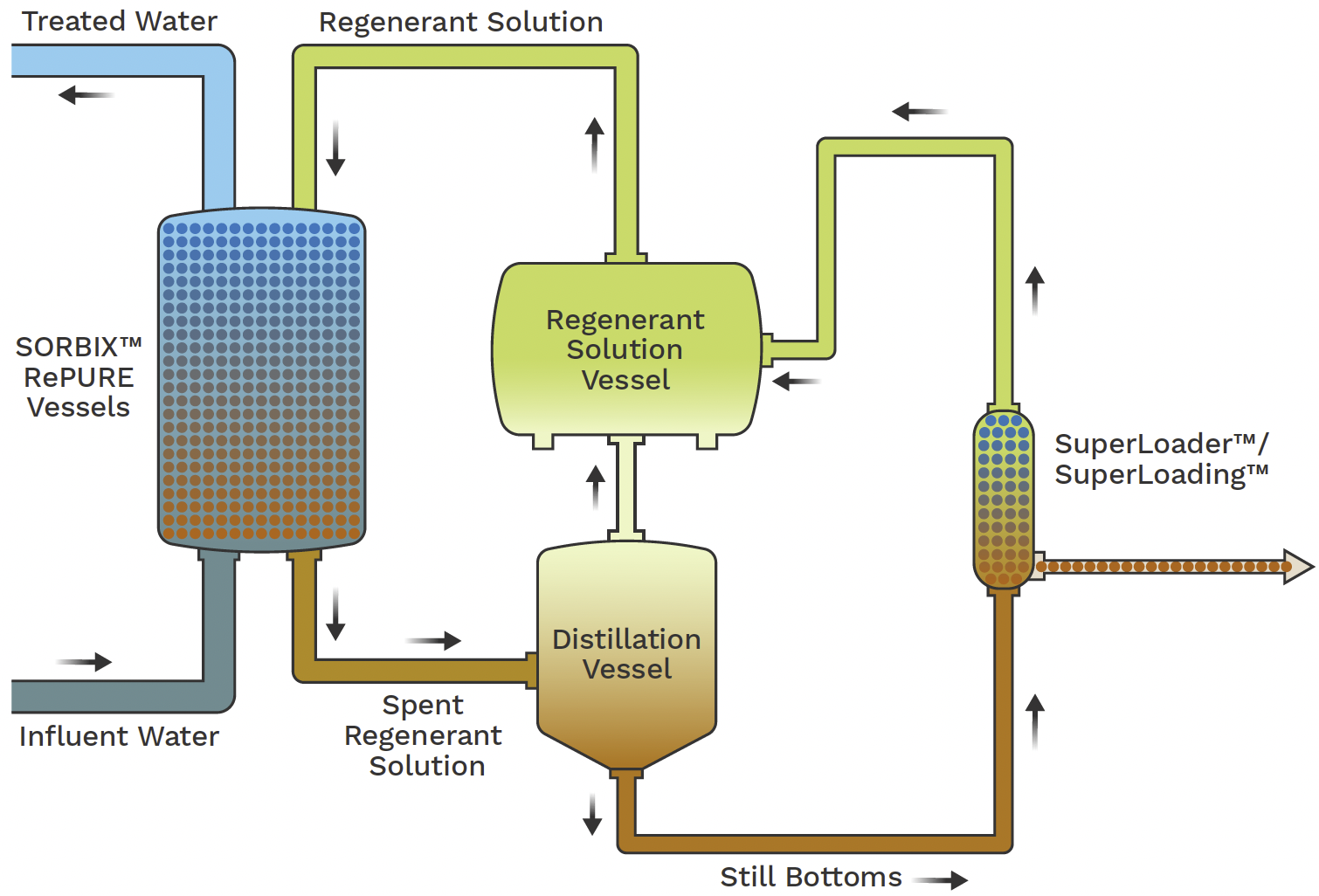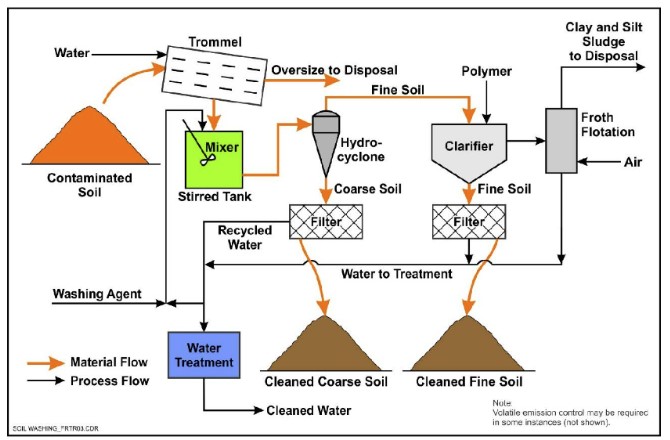Why Advanced PFAS Treatment Is Crucial for Eliminating Harmful Chemical Exposure
Wiki Article
Your Overview to PFAS Therapy Technologies and Advantages
The occurrence of PFAS contamination in water sources requires a thorough understanding of available treatment modern technologies. Different methods, such as triggered carbon filtering, ion exchange systems, and progressed oxidation processes, present distinctive advantages in dealing with these consistent contaminants. Each technology not just targets details PFAS compounds however also plays a crucial role in boosting overall water top quality and protecting ecological honesty. As neighborhoods come to grips with the effects of PFAS direct exposure, the option of a suitable therapy method becomes increasingly important, motivating a better exam of these innovations and their corresponding advantages.Understanding PFAS Contamination
Comprehending PFAS contamination is essential for addressing its pervasive influence on ecological and human health (m270 pfas treatment). Per- and polyfluoroalkyl compounds (PFAS) are a group of artificial chemicals widely made use of in different industrial and consumer products due to their water- and grease-resistant homes. Typically found in firefighting foams, non-stick cookware, and water-repellent fabrics, PFAS have gone into the atmosphere through production procedures, wastewater discharges, and leaching from landfillsOnce released, these substances continue the environment, bring about prevalent contamination of dirt and water sources. Their distinct chemical framework, identified by strong carbon-fluorine bonds, makes them immune to destruction, resulting in a sensation referred to as "permanently chemicals." PFAS can build up in the human body and the food chain, potentially causing negative health impacts, consisting of immune system disturbance, developmental concerns, and a boosted risk of particular cancers cells.
Regulative firms and health and wellness companies are increasingly acknowledging the importance of PFAS contamination, triggering initiatives to keep track of, examine, and minimize its results. Understanding the pathways of PFAS contamination is crucial for notifying public policy and establishing effective strategies to shield both environmental and human health.
Overview of Treatment Technologies
Various treatment modern technologies have actually been established to deal with the obstacles posed by PFAS contamination in water and dirt. These innovations can be generally classified into numerous classifications, each with its special devices and effectiveness in removing PFAS compounds.One popular technique is ion exchange, which uses material products to catch and eliminate PFAS from infected water. Another innovation, advanced oxidation processes (AOPs), utilizes solid oxidants and ultraviolet light to damage down PFAS right into much less dangerous materials.

Turned On Carbon Purification
Activated carbon purification is a commonly used method for the elimination of PFAS from infected water, understood for its ability to adsorb a broad range of organic compounds. This modern technology employs turned on carbon, a very porous material with a substantial surface location, which assists in the binding of PFAS molecules via physical adsorption. The efficiency of turned on carbon in eliminating PFAS is affected by a number of factors, consisting of the type of carbon utilized, the get in touch with time, and the focus of PFAS in the water.One of the benefits of turned on carbon filtration is its adaptability; it can be executed in numerous arrangements, such as granular activated carbon (GAC) systems or powdered activated carbon (SPECIAL-INTEREST GROUP) systems. GAC systems are commonly utilized in larger-scale applications, while political action committee can be made use of in smaller or short-lived setups. In addition, the innovation is relatively simple to operate and preserve, making it obtainable for lots of water therapy facilities.

Ion Exchange Equipment
Ion exchange systems represent another efficient approach for the removal of PFAS from polluted water, enhancing approaches like triggered carbon purification. These systems run on the concept of trading ions in the water with ions held on a resin product. Ion exchange resins can be especially created to target the negatively charged PFAS substances, efficiently capturing them and allowing cleaner water to travel through.One of the main advantages of ion exchange systems is their ability to remove a variety of PFAS, including both long-chain and short-chain versions. This flexibility makes them ideal for different applications, varying from community water treatment to commercial procedures. Furthermore, ion exchange systems can often achieve reduced discovery limitations for PFAS compared to a few other treatment techniques, thus boosting water high quality.
Nevertheless, it is vital to check and take care of the regrowth of ion exchange media, as the performance can decrease with time as a result of saturation. Appropriate maintenance and replacement of the material are critical for sustaining the system's performance. In general, ion exchange systems offer a trusted and effective remedy for PFAS removal, contributing substantially to risk-free alcohol consumption water criteria and environmental management.
Advanced Oxidation Processes
Advanced Oxidation Processes (AOPs) utilize effective oxidants to effectively degrade PFAS compounds in polluted water. These innovative treatment methods produce extremely responsive species, such as hydroxyl radicals, that can break down complex PFAS molecules right into less damaging by-products. m270 pfas treatment. AOPs normally employ combinations of ultraviolet (UV) light, ozone, hydrogen peroxide, or Fenton's pfas treatment reagent, boosting the oxidation capacity and enhancing degradation efficiencyThe main advantage of AOPs depends on their ability to target a wide range of PFAS substances, including both long-chain and short-chain variations. This convenience is important, as PFAS contamination commonly includes mixes of different substances with differing chemical frameworks. In addition, AOPs can be integrated right into existing water treatment systems, making them a useful option for several communities and sectors.
Nonetheless, the implementation of AOPs can be resource-intensive, requiring mindful consideration of functional expenses and energy intake. Furthermore, while AOPs work in damaging down PFAS, they may not entirely get rid of all byproducts, demanding further treatment actions - m270 pfas treatment. Overall, AOPs stand for an encouraging method for dealing with PFAS contamination, adding to cleaner water resources and boosted public wellness defense

Conclusion
To conclude, resolving PFAS contamination calls for a thorough understanding of available therapy modern technologies. Turned on carbon purification, ion exchange systems, and progressed oxidation processes each existing unique benefits for properly removing these damaging substances from water resources. By selecting the appropriate innovation, areas can enhance water quality, shield public health, and alleviate the ecological threats related to PFAS direct exposure. Proceeded study and execution of these techniques are essential for reliable management of PFAS contamination in impacted areas.Report this wiki page